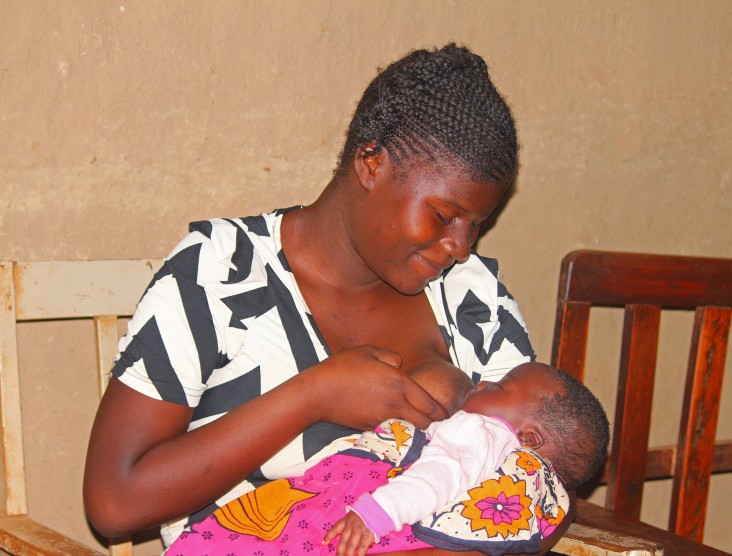Speeches Shim

Eight years ago, Dr. Thomas Burke, a physician from Massachusetts General Hospital (MGH) and an Associate Professor of Emergency Medicine at the Harvard Medical School, was approached by the leaders of a multi-donor trust fund in South Sudan. He was tasked to come up with an innovative way to address emergency health conditions at the community level. He was eager to come up with a meaningful, lifesaving intervention and thought, “Goodness, what about postpartum hemorrhage?” Postpartum hemorrhage (PPH), or excessive and uncontrolled blood loss after birth, is the most common cause of pregnancy related death worldwide. In South Sudan, one in six women die of pregnancy related causes and two of those six will die from PPH. Burke immediately went to work.
At the time, there was a lack of accessible or affordable options to treat PPH in developing countries. Hospitals in the United States use the Uterine Balloon Tamponade (UBT) as a standard of care for PPH, but these medical balloons are single use only and can cost up to $400. The premise of a UBT is that a balloon is inflated inside the uterus and the applied pressure stops bleeding after childbirth. Burke knew of variations of the UBT that had had some success in Uganda and Bangladesh, including the use of intravenous tubing where one person tied a condom and one tied a sterile glove to stop the bleed. Could he build upon this idea of using local materials to find a creative solution? He went out and bought 20 silicone, obstetrical balloons, known as Bakri Balloons, and designed a self-contained UBT kit that cost less than $10 to make. Consisting of a condom tied to a Foley catheter and inflated with clean water through a syringe and one-way valve,1The kit resembles something you could buy at Home Depot,” he says.
The MGH team received funding through Saving Lives at Birth for their innovation, “Every Second Matters for Mothers and BabiesTM- Uterine Balloon Tamponade (ESM-UBT).” The grant allowed Burke and his team to provide this simple, rapid, safe, affordable, and effective intervention to facilities in Kenya and Sierra Leone. From 2013-2015, over 1500 healthcare workers in Kenya and 1600 in Sierra Leone received training on how to use the UBT kit. As of July 2017, the $10 UBT has saved the lives of over 640 women suffering from PPH throughout these facilities. However, the UBT has saved the lives of many more women throughout the developing world, where MGH does not have monitoring in place. Today, the UBT is used throughout 22 countries. Burke notes that USAID has been the anchor to the whole program, and these results would not be possible without their support.
Burke recalls the story of Maggy*, a mother of six in Kenya, who went to a traditional birth attendant at 4 a.m. for her seventh delivery. Her delivery had complications and the traditional birth attendant could not stop Maggie’s bleeding after the birth. By the time a nurse-midwife arrived from a nearby facility, Maggy had lost so much blood, was losing consciousness and presented with cold extremities, weak pulse rate and pallor. Time was running out and the nurse-midwife knew Maggy’s life was in danger. Maggy desperately needed to transferred to a higher level facility but there was no hope for an ambulance as it was early in the morning and all ambulances were still based at the town center. The only available means of transportation was a local fisherman’s canoe. After exhausting all other options, the nurse-midwife took out her uterine balloon tamponade kit (ESM-UBT) and inserted the UBT hoping she would not lose the woman. After 10 minutes, the bleeding stopped and Maggie was regaining consciousness and her vital signs stabilized. Thanks to ESM-UBT, Maggy’s life was saved and her seven children still have a mother today.
The remarkable stories of women surviving a once fatal complication have sparked a conversation about this innovation on a global level. Looking toward the future of the UBT kit, Burke advises countries to work closely with local stakeholders and ministries of health to emphasize that this must be a public investment in order to sustain this life saving innovation. Burke and his colleagues from MGH are round 7 finalists for Saving Lives at Birth for an innovation involving newborn respiratory therapy.
*Name has been altered for privacy purposes
« Back to the Acting on the Call home page

Comment
Make a general inquiry or suggest an improvement.